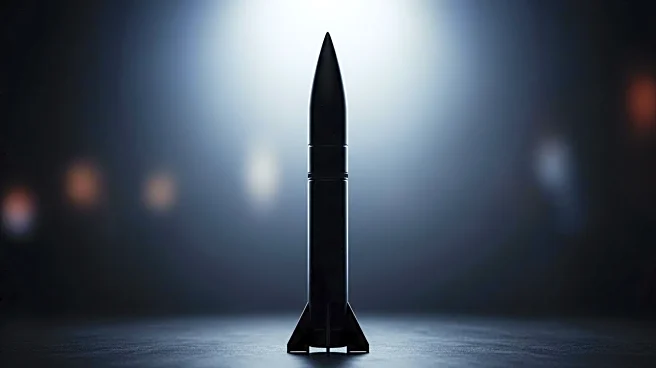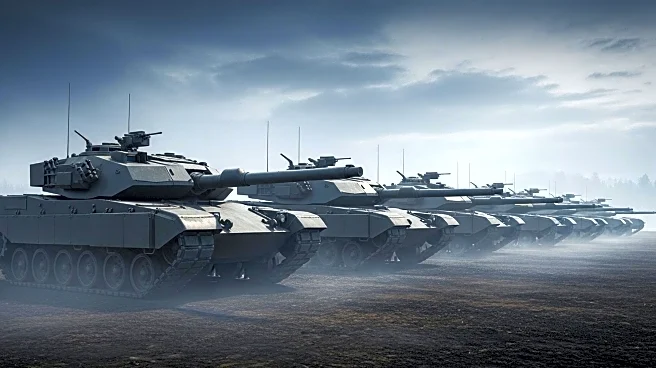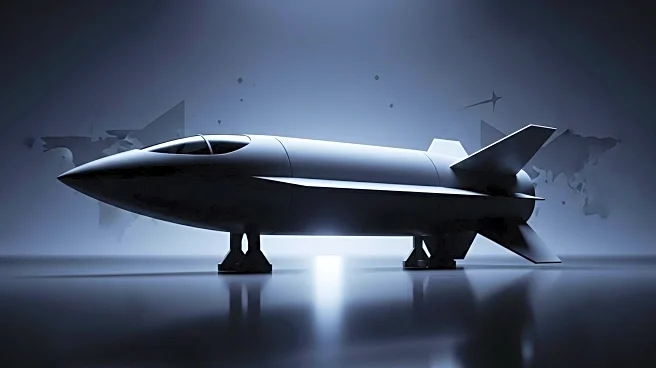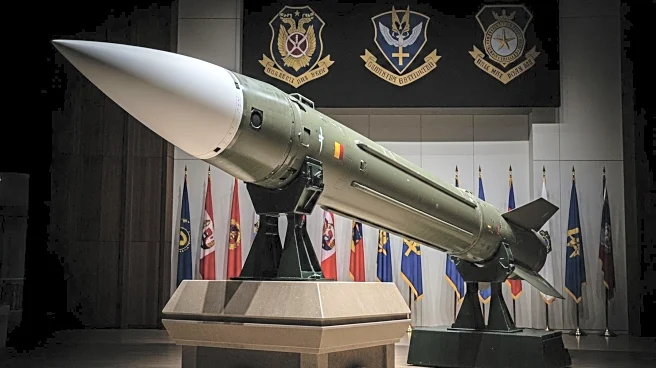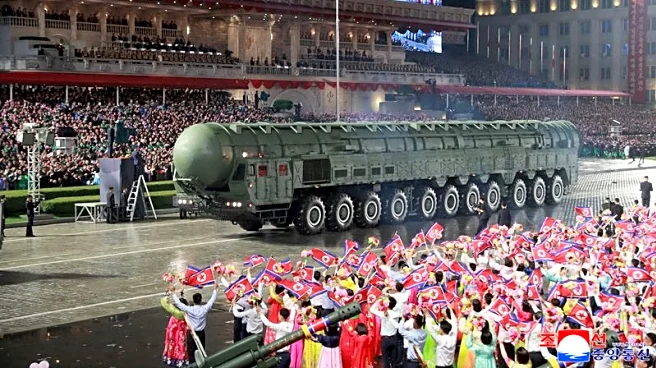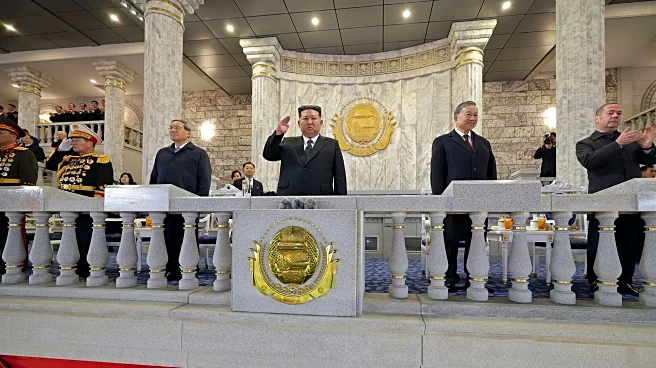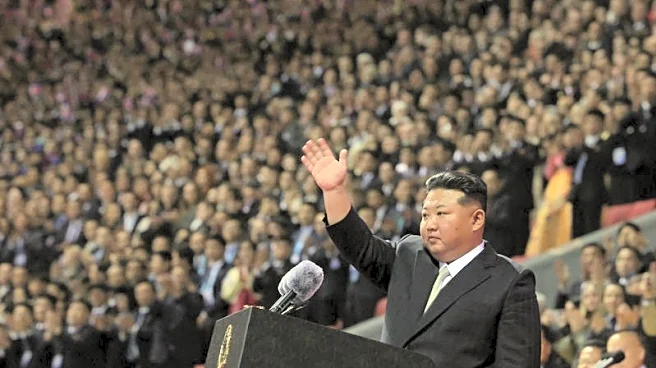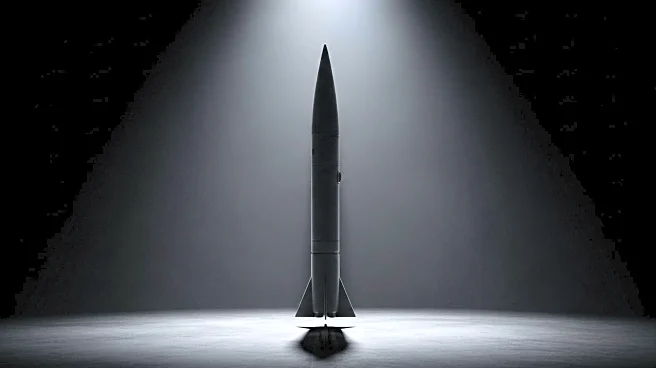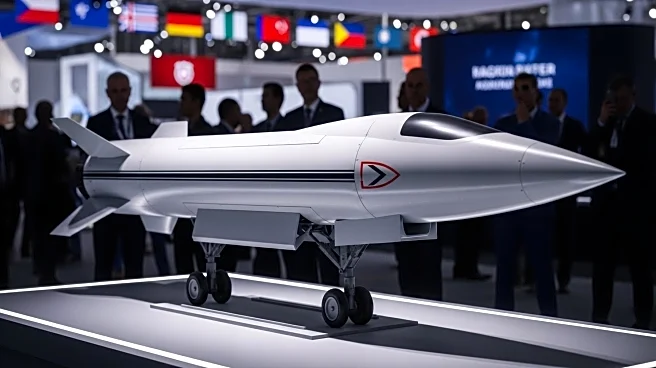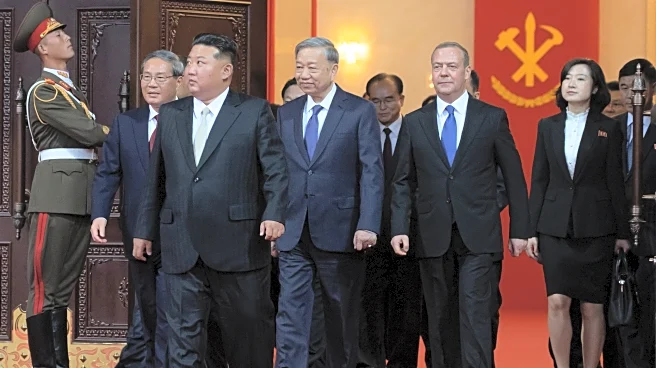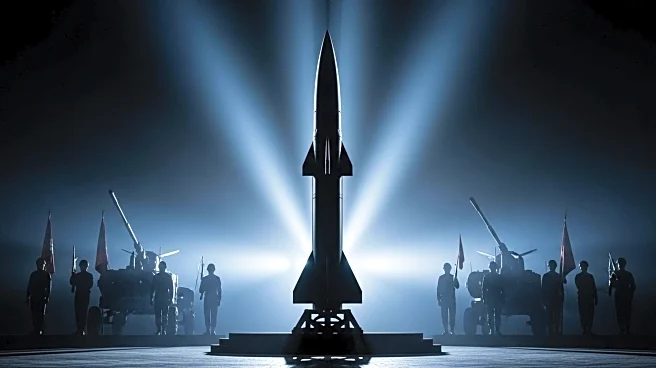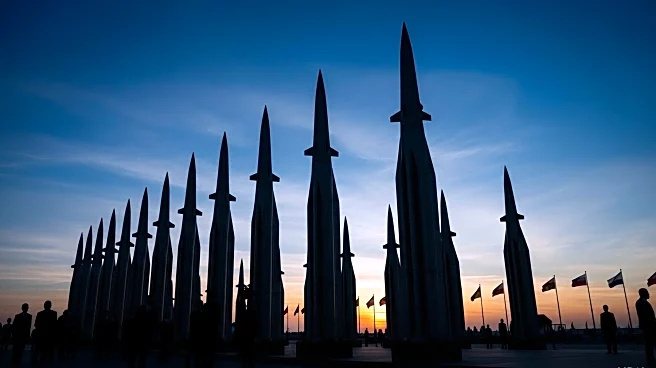What is the story about?
What's Happening?
North Korea has showcased a new intercontinental ballistic missile, the Hwasong-20, during a military parade celebrating the 80th anniversary of the ruling Workers' Party. The parade, attended by foreign leaders, highlighted North Korea's advancements in missile technology, including the debut of the Hwasong-20 mounted on 11-axle launcher trucks. This missile features a solid-fuel rocket engine, which is more powerful and easier to move than previous liquid-fueled versions. North Korean leader Kim Jong Un emphasized the need for his military to grow into an 'invincible entity' capable of destroying threats. The parade also included other weapons such as shorter-range ballistic, cruise, and hypersonic missiles, as well as tanks, artillery systems, and drones.
Why It's Important?
The unveiling of the Hwasong-20 signifies North Korea's ongoing efforts to enhance its missile capabilities, potentially including multi-warhead systems designed to penetrate missile defenses. This development poses a potential threat to the U.S. mainland, as North Korea has previously tested ICBMs capable of reaching the continental United States. The parade underscores Kim Jong Un's diplomatic efforts to establish a larger role for North Korea in opposition to the U.S.-led West, as evidenced by the presence of high-level officials from China, Russia, and Vietnam. The advancements in missile technology could shift the balance of power in the region and complicate international diplomatic efforts.
What's Next?
North Korea may be preparing to test the Hwasong-20 in the coming weeks, which could further escalate tensions with the United States and its allies. The international community, particularly the U.S., may respond with increased diplomatic pressure or sanctions to deter further missile development. North Korea's refusal to engage in talks with Washington and Seoul since the collapse of nuclear diplomacy with President Trump in 2019 suggests that diplomatic resolutions may be challenging. The presence of foreign leaders at the parade indicates potential strengthening of alliances between North Korea, China, and Russia, which could impact geopolitical dynamics.
Beyond the Headlines
The parade and missile unveiling highlight North Korea's strategic focus on military capabilities, both nuclear and conventional. Kim Jong Un's emphasis on building an 'invincible entity' reflects a broader ambition to assert North Korea's power on the global stage. The involvement of North Korean soldiers in Russia's conflict with Ukraine, as praised by Russian officials, suggests a deepening military cooperation between the two nations. This could lead to increased military exchanges and collaboration, further isolating North Korea from Western nations and complicating efforts for peace and stability in the region.
AI Generated Content
Do you find this article useful?
